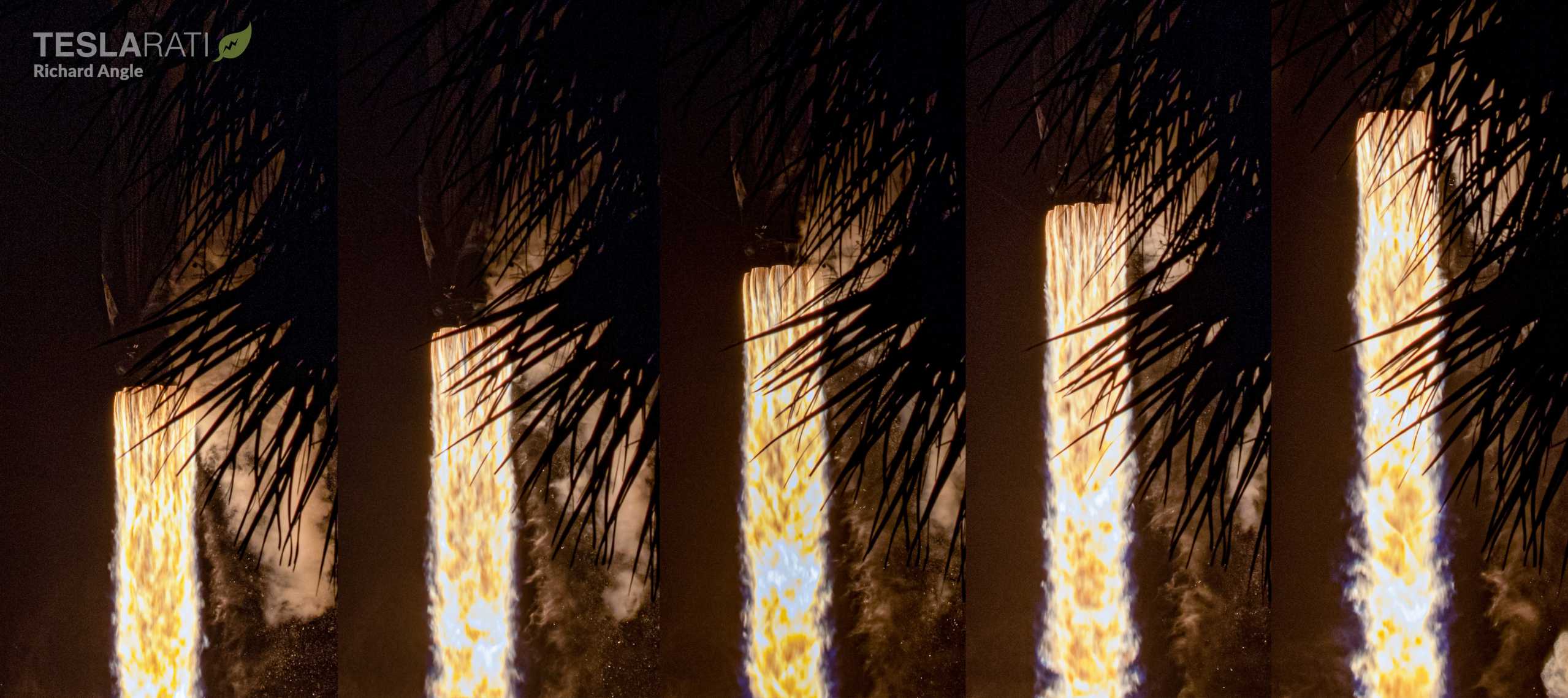
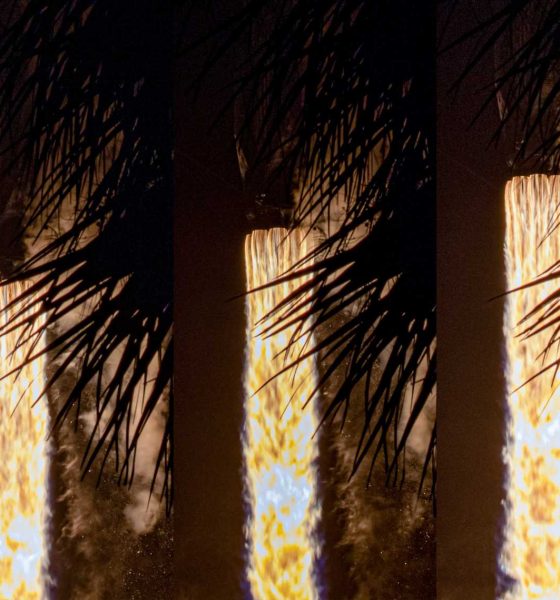
News
SpaceX closes in on Falcon 9 reliability milestone after flawless Monday launch [photos]
SpaceX’s workhorse Falcon 9 rocket has completed its thirteenth launch of 2019, leaving the vehicle just one mission away from a major reliability milestone.
At 7:10 pm ET, December 16th (00:10 UTC, Dec 17), Falcon 9 booster B1056, a new upper stage, and the nearly 7-metric ton (15,500 lb) Kacific-1/JCSAT-18 communications satellite lifted off from SpaceX’s Cape Canaveral LC-40 launch pad. As has more or less become the norm, Falcon 9 sailed through prelaunch preparations, payload integration, and launch with zero notable issues and lifted off at the precise start of a ~90-minute window.
Around nine minutes after launch and 30 seconds after the second stage reached orbit, Falcon 9 B1056 successfully landed aboard drone ship Of Course I Still Love You (OCISLY), completing the booster’s third launch and landing in seven months. 27 minutes after launch, Falcon 9’s second stage reignited and burned for more than 50 seconds, raising one end of its orbit by more than 20,000 km (12,500 mi). Five minutes later, Falcon 9 officially completed its mission by gently releasing Kacific-1/JCSAT-18 from the second stage, where the satellite shortly reoriented itself, deployed ~40-meter (~125 ft) long solar ‘wings’, and began verifying its systems’ health.
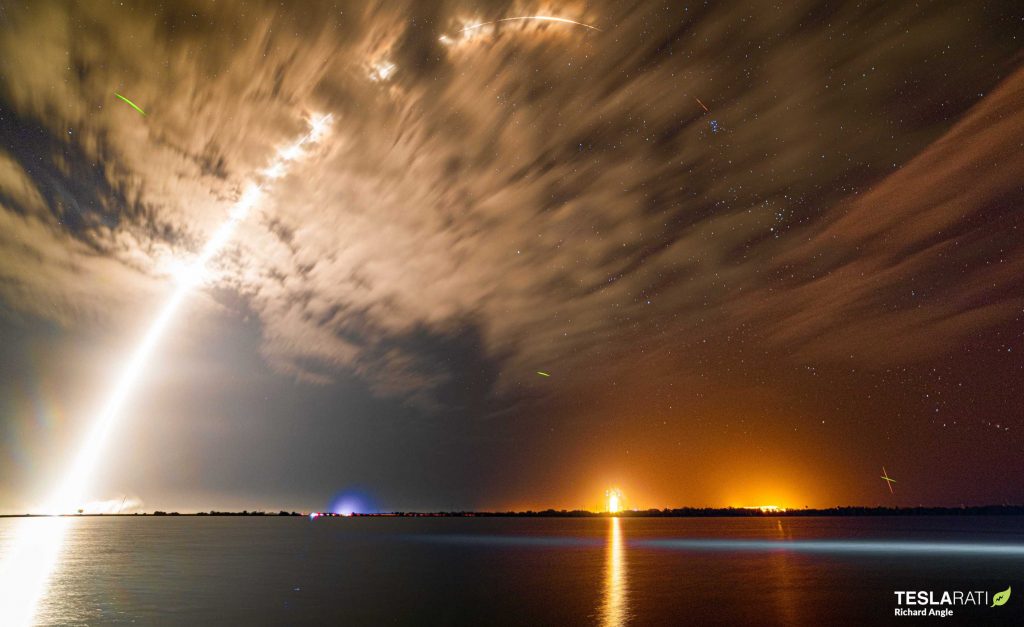
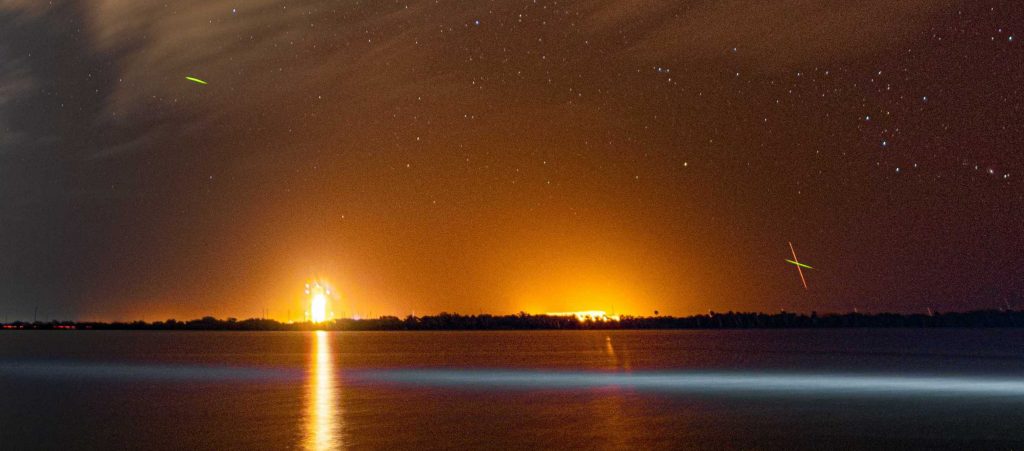
Aside from another successful and issue-free launch under the Falcon family’s belt, the Kacific-1 mission is significant for another major reason: it’s Falcon 9’s 49th consecutively-successful launch since January 2017. Falcon 9’s last catastrophic failure occurred on September 1st, 2016 when the rocket’s upper stage violently exploded, destroying the rest of the rocket and its Amos-6 satellite payload.
SpaceX took approximately four months to determine the root cause of that failure and modify hardware and procedures accordingly before returning to flight with the first Iridium NEXT launch on January 14th, 2017. In the three years (35 months) since then, Falcon 9 has successfully launched a total of 49 times in a row without even a partial failure. After one additional launch success, Falcon 9 will have flown 50 consecutively-successful missions, a symbolic but still exceptional sign of the rocket’s excellent reliability. That 50th launch attempt could come as early as December 30th in the form of SpaceX’s third 60-satellite Starlink mission, known as Starlink-2.
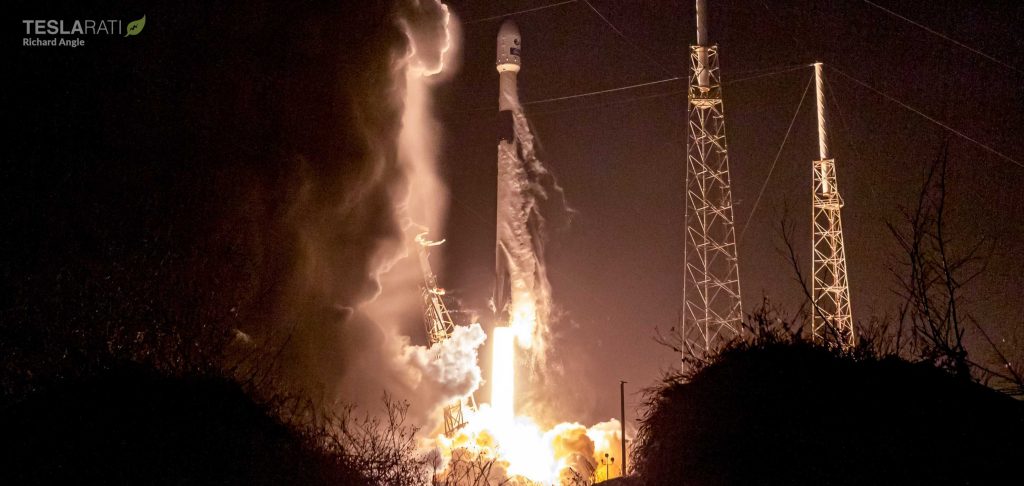
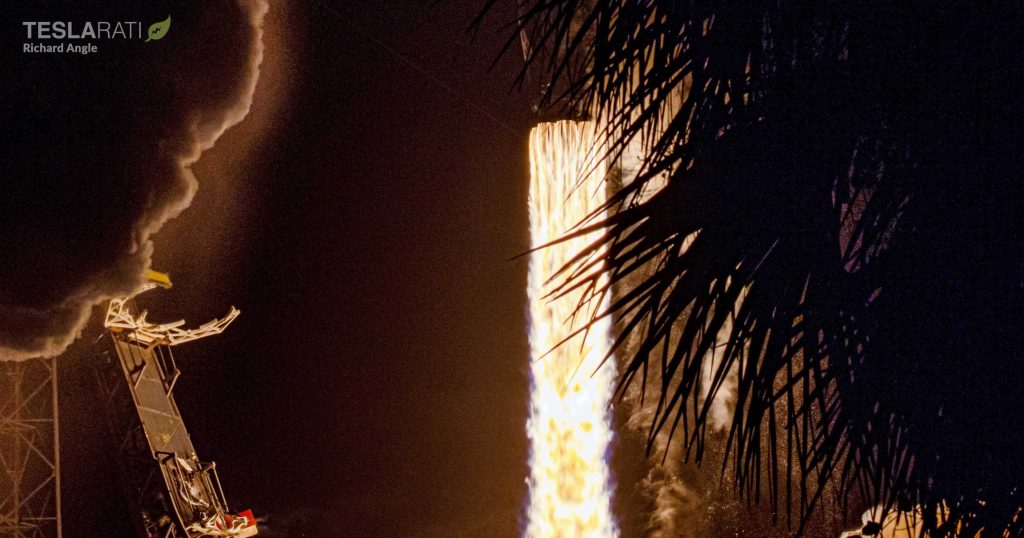
Technically speaking, if Falcon Heavy is included, SpaceX has already completed 52 consecutively-successful orbital launches without a single failure (or partial failure), the only company or space agency in the world that can currently claim that feat. Although both Arianespace and ULA are infamous for whitewashing the partial failures of their launch vehicles, Ariane 5 unfortunately suffered a partial failure in January 2018, while ULA’s Atlas V and Delta IV suffered their own partial failures in 2007 and 2004, respectively. Atlas V experienced another in-flight anomaly in 2016, although it was not technically classified as a partial failure.
This means that Ariane 5, Delta IV, and Atlas V – still some of the most reliable launch vehicles ever built – have technically only performed 9, 36, and 70 (or 18) consecutively-successful launches since their most recent partial failure (or in-flight anomaly). In other words, if measured in terms of uninterrupted consecutive launch successes, SpaceX’s Falcon 9 is either the most reliable or the second most reliable launch vehicle currently in operation.

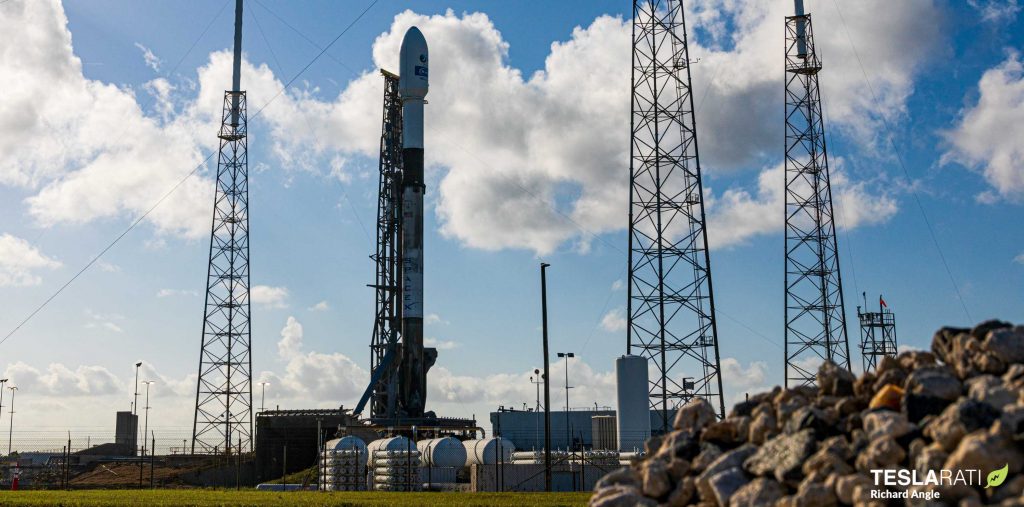
Perhaps even more impressive is the fact that SpaceX has pulled off that feat of reliability in less than three years, unequivocally making Falcon 9 the best all-purpose launch vehicle in the world in terms of its combined reliability and flight frequency – the latter thanks in large part to the rocket’s exceptionally competitive pricing.
As of now, SpaceX has at least two or three-dozen launches nominally planned for 2020 and if all of those launches are successfully completed, Falcon 9 will almost certainly become the world’s most reliable operational launch vehicle by any measure.
Check out Teslarati’s Marketplace! We offer Tesla accessories, including for the Tesla Cybertruck and Tesla Model 3.

News
Tesla hints at Starlink integration with recent patent
“By employing polymer blends, some examples enable RF transmission from all the modules to satellites and other communication devices both inside and outside the vehicle.”

Tesla hinted at a potential Starlink internet terminal integration within its vehicles in a recent patent, which describes a vehicle roof assembly with integrated radio frequency (RF) transparency.
The patent, which is Pub. No U.S. 2025/0368267 describes a new vehicle roof that is made of RF-transparent polymer materials, allowing and “facilitating clear communication with external devices and satellites.”
Tesla believes that a new vehicle roof design, comprised of different materials than the standard metallic or glass elements used in cars today, would allow the company to integrate modern vehicular technologies, “particularly those requiring radio frequency transmission and reception.
Tesla has recently filed a US patent application on integrating RF transparent materials into the roof structure.
“facilitating clear communication with external devices and satellites”
Tesla fleet is getting @Starlink connectivity integration soon. LFG @Tesla @elonmusk… pic.twitter.com/bLa8YtPLd1
— Chansoo Byeon (@Chansoo) December 9, 2025
Instead of glass or metallic materials, Tesla says vehicles may benefit from high-strength polymer blends, such as Polycarbonate, Acrylonitrile Butadiene Styrene, or Acrylonitrile Styrene Acrylate.
These materials still provide ideal strength metrics for crashworthiness, stiffness for noise, vibration, and harshness control, and are compliant with head impact regulations.
They would also enable better performance with modern technologies, like internet terminals, which need an uninterrupted signal to satellites for maximum reception. Tesla writes in the patent:
“By employing polymer blends, some examples enable RF transmission from all the modules to satellites and other communication devices both inside and outside the vehicle.”

One of the challenges Tesla seems to be aware of with this type of roof design is the fact that it will still have to enable safety and keep that at the forefront of the design. As you can see in the illustration above, Tesla plans to use four layers to increase safety and rigidity, while also combating noise and vibration.
It notes in the patent that disclosed examples still meet the safety requirements outlined in the Federal Motor Vehicle Safety Standards (FMVSS).
Starlink integrated directly into Tesla vehicles would be a considerable advantage for owners. It would come with a handful of distinct advantages.
Initially, the inclusion of Starlink would completely eliminate cellular dead zones, something that is an issue, especially in rural areas. Starlink would provide connectivity in these remote regions and would ensure uninterrupted service during road trips and off-grid adventures.
It could also be a critical addition for Robotaxi, as it is crucial to have solid and reliable connectivity for remote monitoring and fleet management.
Starlink’s growing constellation, thanks to SpaceX’s routine and frequent launch schedule, will provide secure, stable, and reliable internet connectivity for Tesla vehicles.
Although many owners have already mounted Starlink Mini dishes under their glass roofs for a similar experience, it may be integrated directly into Teslas in the coming years, either as an upgrade or a standard feature.
News
Tesla supplements Holiday Update by sneaking in new Full Self-Driving version
It seems Tesla was waiting for the Hardware 4 rollout, as it wanted to also deploy a new Full Self-Driving version to those owners, as it appeared in the release notes for the Holiday Update last night.

Tesla has surprised some owners by sneaking in a new Full Self-Driving version with the wide release of the Holiday Update, which started rolling out to Hardware 4 owners on Friday night.
Tesla has issued a controlled and very slow release pattern with the Holiday Update, which rolls out with Software Version 2025.44.25.5.
For the past two weeks, as it has rolled out to Hardware 3 and older Tesla owners, the company has kept its deployment of the new Software Version relatively controlled.
It seems Tesla was waiting for the Hardware 4 rollout, as it wanted to also deploy a new Full Self-Driving version to those owners, as it appeared in the release notes for the Holiday Update last night.
Tesla Full Self-Driving v14.2.1.25 made its first appearance last night to Hardware 4 owners who are members of the Early Access Program (EAP). It appears to be a slight refinement from FSD v14.2.1, which has been out for a couple of weeks.
Tesla v2025.44.25.5 Holiday update incoming
Also Full Self-Driving v14.2.1.25!!! pic.twitter.com/74D7S0UGXz
— TESLARATI (@Teslarati) December 13, 2025
Many owners welcome the new FSD version, us included, because we’ve been less than impressed with v14.2.1. We have experienced some minor regressions with v14.2.1, especially with Speed Limit recognition, Speed Profile tinkering, and parking performance.
As it stands, Full Self-Driving is still particularly impressive, but Tesla is evidently having an issue with some of the adjustments, as it is still refining some of the performance aspects of the suite. This is expected and normal with some updates, as not all of them are an improvement in all areas; we routinely see some things backtrack every once in a while.
This new FSD version is likely to take care of those things, but it also includes all of the awesome Holiday Update features, which include:
- Grok with Navigation Commands (Beta) – Grok will now add and edit destinations.
- Tesla Photobooth – Take pictures inside your car using the cabin-facing camera
- Dog Mode Live Activity – Check on your four-legged friend on your phone through periodic snapshots taken of the cabin
- Dashcam Viewer Update – Includes new metrics, like steering wheel angle, speed, and more
- Santa Mode – New graphics, trees, and a lock chime
- Light Show Update – Addition of Jingle Rush light show
- Custom Wraps and License Plates – Colorizer now allows you to customize your vehicle even further, with custom patterns, license plates, and tint
- Navigation Improvements – Easier layout and setup
- Supercharger Site Map – Starting at 18 pilot locations, a 3D view of the Supercharger you’re visiting will be available
- Automatic Carpool Lane Routing – Navigation will utilize carpool lanes if enabled
- Phone Left Behind Chime – Your car will now tell you if you left a phone inside
- Charge Limit Per Location – Set a charge limit for each location
- ISS Docking Simulator – New game
- Additional Improvements – Turn off wireless charging pad, Spotify improvements, Rainbow Rave Cave, Lock Sound TRON addition
Tesla also added two other things that were undocumented, like Charging Passport and information on USB drive storage to help with Dashcam.
Cybertruck
Tesla updates Cybertruck owners about key Powershare feature

Tesla is updating Cybertruck owners on its timeline of a massive feature that has yet to ship: Powershare with Powerwall.
Powershare is a bidirectional charging feature exclusive to Cybertruck, which allows the vehicle’s battery to act as a portable power source for homes, appliances, tools, other EVs, and more. It was announced in late 2023 as part of Tesla’s push into vehicle-to-everything energy sharing, and acting as a giant portable charger is the main advantage, as it can provide backup power during outages.
Cybertruck’s Powershare system supports both vehicle-to-load (V2L) and vehicle-to-home (V2H), making it flexible and well-rounded for a variety of applications.
However, even though the feature was promised with Cybertruck, it has yet to be shipped to vehicles. Tesla communicated with owners through email recently regarding Powershare with Powerwall, which essentially has the pickup act as an extended battery.
Powerwall discharge would be prioritized before tapping into the truck’s larger pack.
However, Tesla is still working on getting the feature out to owners, an email said:
“We’re writing to let you know that the Powershare with Powerwall feature is still in development and is now scheduled for release in mid-2026.
This new release date gives us additional time to design and test this feature, ensuring its ability to communicate and optimize energy sharing between your vehicle and many configurations and generations of Powerwall. We are also using this time to develop additional Powershare features that will help us continue to accelerate the world’s transition to sustainable energy.”
Owners have expressed some real disappointment in Tesla’s continuous delays in releasing the feature, as it was expected to be released by late 2024, but now has been pushed back several times to mid-2026, according to the email.
Foundation Series Cybertruck buyers paid extra, expecting the feature to be rolled out with their vehicle upon pickup.
Cybertruck’s Lead Engineer, Wes Morrill, even commented on the holdup:
As a Cybertruck owner who also has Powerwall, I empathize with the disappointed comments.
To their credit, the team has delivered powershare functionality to Cybertruck customers who otherwise have no backup with development of the powershare gateway. As well as those with solar…
— Wes (@wmorrill3) December 12, 2025
He said that “it turned out to be much harder than anticipated to make powershare work seamlessly with existing Powerwalls through existing wall connectors. Two grid-forming devices need to negotiate who will form and who will follow, depending on the state of charge of each, and they need to do this without a network and through multiple generations of hardware, and test and validate this process through rigorous certifications to ensure grid safety.”
It’s nice to see the transparency, but it is justified for some Cybertruck owners to feel like they’ve been bait-and-switched.








